Make These Eight Famous Cocktails From Bars Around the World
They might taste sweeter when you know the history behind them
/https://tf-cmsv2-smithsonianmag-media.s3.amazonaws.com/filer/10/42/1042d814-9e42-4a97-89da-5eff010caa13/bellini_at_harrys_bar_in_venice.jpg)
While you may not be sipping on a Negroni in Florence anytime soon, that doesn't mean you can't enjoy your favorite cocktails from around the world this summer. Brush up on the history of these drinks, get out your mixer and follow original recipes from those closest to the bartenders that first mixed them.
Zombie; Created in 1934 at Don the Beachcomber in Hollywood
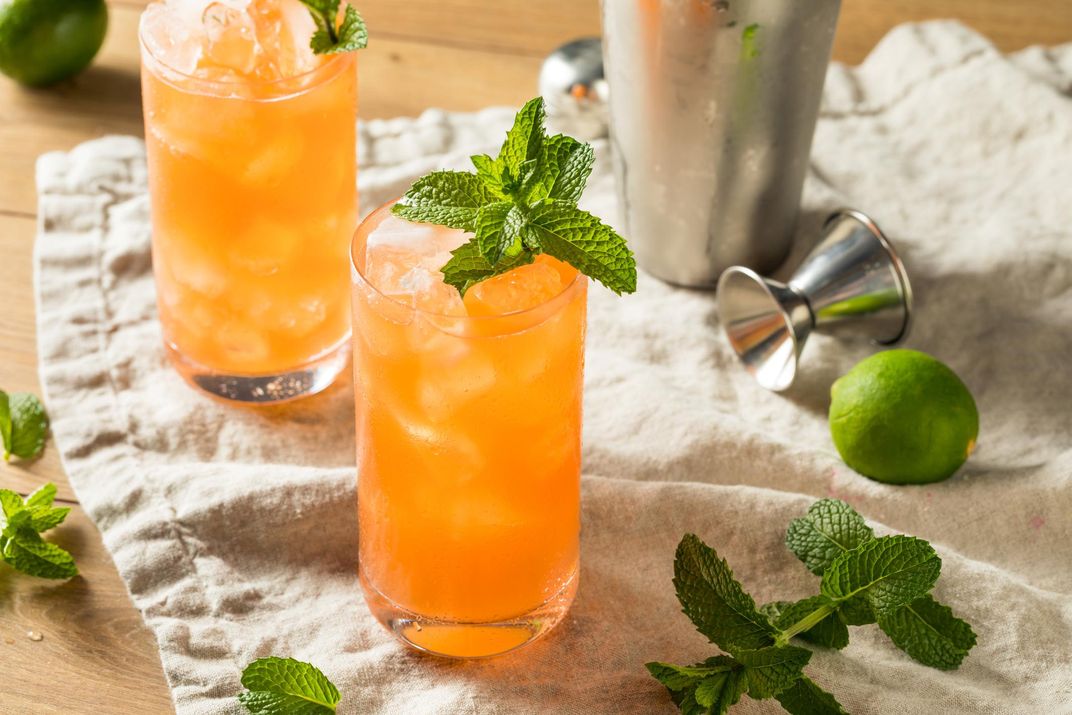
The day after Prohibition ended, Donn Beach opened his bar, Don the Beachcomber, in Hollywood. At that point, nobody drank Caribbean rum—but it was in high supply.
“Donn, unlike bartenders and bar owners in the U.S. at that time, knew what to do with it,” says cocktail historian Jeff Berry. “He’d been to the islands. He knew it was good stuff and it would make great cocktails. He invented this whole new style of mixology—people call it tiki drinks now. He called them rum rhapsodies.”
Beach’s rum rhapsodies took standard rum punch and added dimension by layering multiple types or styles of the same ingredient to create more nuanced flavors—like three different spice blends, or two different tropical juices. He invented more than 70 drinks—one of those being the Zombie, which instantly gained popularity. The Zombie mixes three types of rum, multiple fruit juices, and three different syrups to create a powerful alcoholic blend.
“It became the cosmopolitan of its day,” Berry says. “It was a challenge to the two-fisted red-blooded American male of the 1930s who would generally resist drinking a fruity, lovingly garnished drink. [Donn’s] great marketing genius was that he said, ‘No more than two to a customer or we’ll throw you out.’ It was a challenge. ‘I’m going to climb macho mountain and have three of these and not pass out.’ And it worked.”
It worked so well, in fact, that people started making copycats. Within three years, more than 150 copycat bars popped up, saying they were home of the Zombie, or named after the drink. But none of them could ever actually make the real thing; Beach never published his recipe, and the instructions in his bartenders’ books were written in code. It took Berry alone about 10 years to break the code and finally create the original Zombie recipe.
Recipe from Jeff Berry: In a blender, put 3/4 ounce fresh lime juice, 1/2 ounce falernum, 1 1/2 ounces each gold Puerto Rican rum and gold or dark Jamaican rum, 1 ounce 151-proof Lemon Hart Demerara rum, 1 teaspoon grenadine, 6 drops Pernod, a dash of Angostura bitters, and 1/2 ounce Don’s mix (2 parts grapefruit juice to 1 part cinnamon-infused sugar syrup). Add 3/4 cup crushed ice. Blend on high for up to 5 seconds. Pour into a tall glass, add ice cubes to fill, and garnish with a mint sprig.
Moonwalk; Created in 1969 at American Bar in London
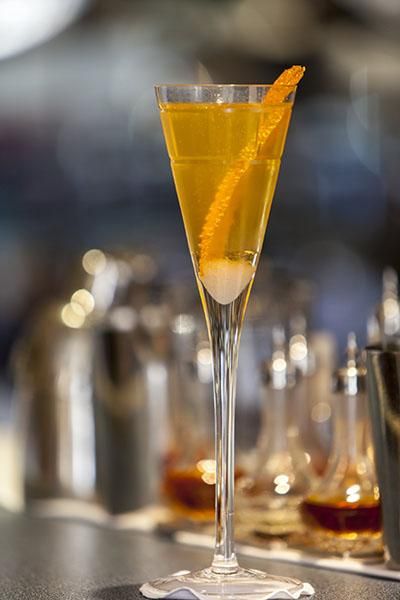
Joe Gilmore, head barmen at The Savoy Hotel’s American Bar in London from 1955 to 1976, had a penchant for creating cocktails that honored occasions he deemed momentous. So when Neil Armstrong took his first steps on the moon on July 20, 1969, it only made sense for Gilmore to concoct a new drink to mark the event. This time, though, Gilmore took it even further. He filled a flask with the cocktail and shipped it off to NASA—and when Armstrong and Buzz Aldrin landed back on Earth, it was the first thing they drank.
Recipe: In a shaker, mix together 3 dashes grapefruit juice, 2 dashes rose water, and 5/6 ounce Grand Marnier Cordon Rouge. Add ice to fill shaker. Shake vigorously and strain into a champagne flute. Top with champagne.
Bellini; Created in 1948 at Harry’s Bar in Venice
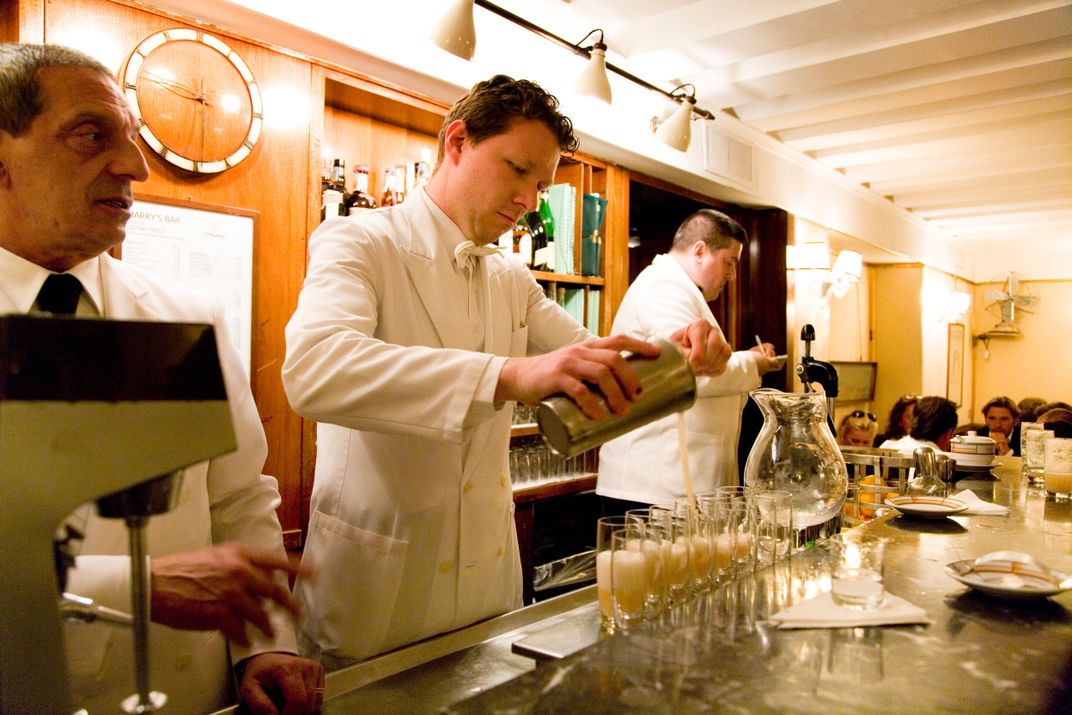
In 1948, Venice hosted an exhibition of Renaissance painter Giovanni Bellini’s artwork. The Venetian painter, who lived from about 1435 to 1516, was best known for his portrayal of natural light in his work, most notably in The Agony in the Garden. At the time, Giuseppe Cipriani, Sr., owned Venice mainstay Harry’s Bar. The spot hosted a who’s-who of society, from writers and painters to local elite and royals. According to the bar owner's son Arrigo, Guiseppe created Giovanni Bellini’s namesake cocktail to celebrate the painter’s exhibition. Use of the peach juice and color was allegedly inspired by Bellini's preferred use of subdued colors in his artwork.
Recipe from Arrigo Cipriani, Giuseppe’s son: Fill one-third of the glass with thick white peach juice. Fill the remainder of the glass with Italian sparkling wine.
Negroni; Created in 1919 at Cafe Casoni in Florence
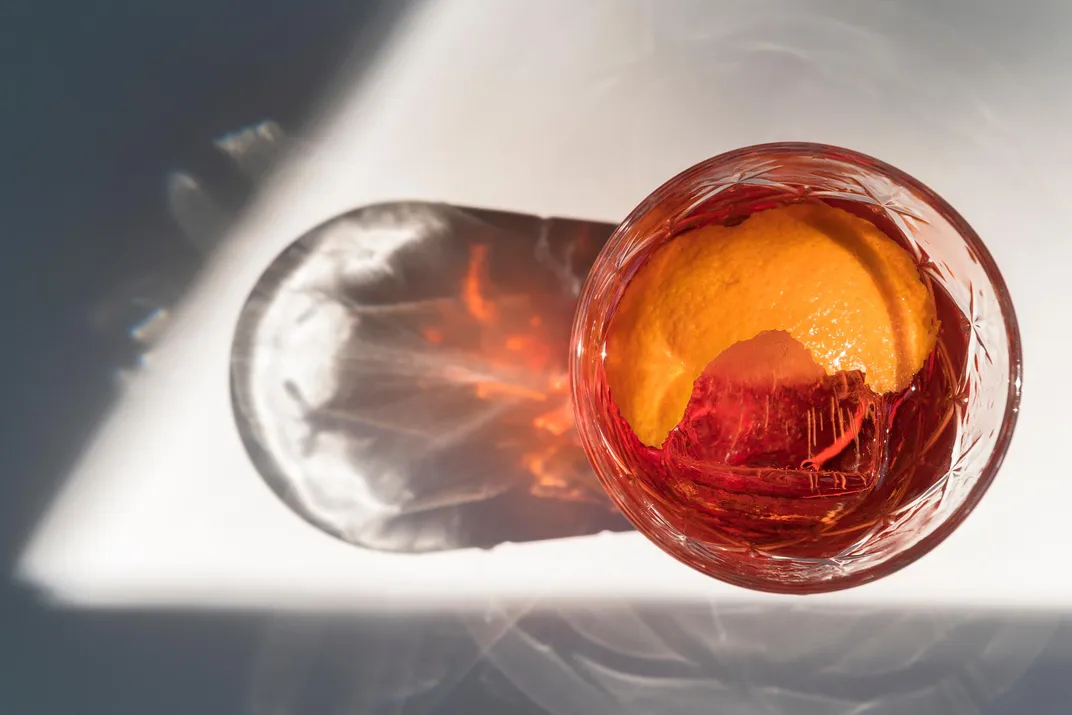
Even though the Negroni was invented in Florence, the cocktail itself has a decidedly American flair. According to Luca Picchi, author of Negroni Cocktail: An Italian Legend, Count Camillo Negroni (the cocktail’s creator) left his home country of Italy around 1888 for the United States, where he worked as a cowboy on a ranch in Wyoming until 1899. At that point, he moved to New York City and opened a fencing school. During the days, Negroni ran the school; in the evenings, he frequented local cocktail bars learning about the trade and collecting recipes. He took that knowledge and experience back to Italy with him in 1904. By 1912, he was once again in Florence, where, Picchi says, “mixology was an unknown art.” He adds, “Usually people drank a lot of wine and beer. The only famous concoction in Italian high society was a simple mixture made with a regular service of red vermouth with a splash of bitter Campari and soda.” That cocktail was called the Americano; the drink was particularly popular among American tourists in Florence during that time, leading to the name. Negroni, who preferred American cocktails, wasn’t satisfied. In 1919, he suggested the bartender at Café Casoni use less soda and add English gin—and the Negroni cocktail was born.
Recipe: Mix together 1 ounce Campari, 1 ounce gin, and 1 ounce sweet vermouth. Garnish with an orange slice.
Moscow Mule; Created in 1941 at the Cock ‘n Bull in Los Angeles
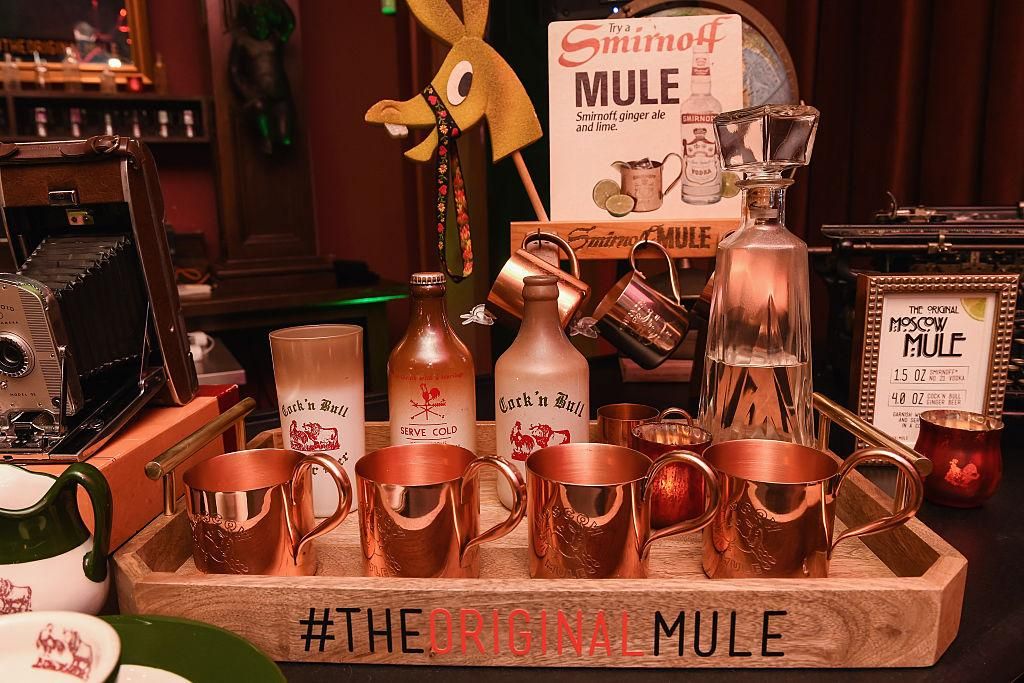
The story of the Moscow mule’s origin has been passed down through the generations. Mark Milakovich, current owner of the Dallas, Texas-based Moscow Copper Company, which sells copper mugs specifically for the drink, heard it from J.J. Resnick, the original founder of the company, who heard it from his dad, who heard it from his dad, whose mother was Sophie Berezinski. Her dad ran a copper company in Russia, and looked to Berezinski to create a mug design. She created the copper mugs Moscow mules are still served in today, and her father manufactured 2,000 of them. She emigrated to the United States shortly thereafter, mugs in tow, and in 1941, Berezinski walked into the Cock ‘n Bull in Hollywood intent on selling them. It was a lucky day for her; sitting inside the bar lamenting low sales were Smirnoff owner John Martin, who struggled selling his vodka, and Cock ‘n Bull owner Jack Morgan, who couldn’t sell his new brand of ginger beer. Berezinski and the two men worked together that day to create a drink that would use all three of their products, and the Moscow mule burst into the cocktail scene.
At least that’s what Resnick was told.
“The reality is probably not as clean as that story,” Milakovich says. “There are a lot of questions. How did someone coming over from Russia in that time have that many mugs? There are different versions of the name of the woman involved. A family secret says she was really dating the Smirnoff guy, and she was cheating on [Resnick’s] great grandpa. Somebody had the mugs they were selling, somebody had the vodka they were selling, and someone had the ginger beer they didn’t know what to do with. How it was actually created, who was sleeping with who, who wandered into the bar that day, I don’t know. But something like that happened.”
One thing is for sure, though—the copper mug adds a distinct flavor to the drink, as well as a playfulness. “The minute you see someone drinking out of a copper mug, you know exactly what it is,” Milakovich says.
Recipe from Moscow Copper Company: Fill a copper mug with ice. Add 1 part vodka, 2 parts ginger beer and the juice of half a lime. Stir and serve.
Appletini; Created in 1996 at Lola’s in Los Angeles
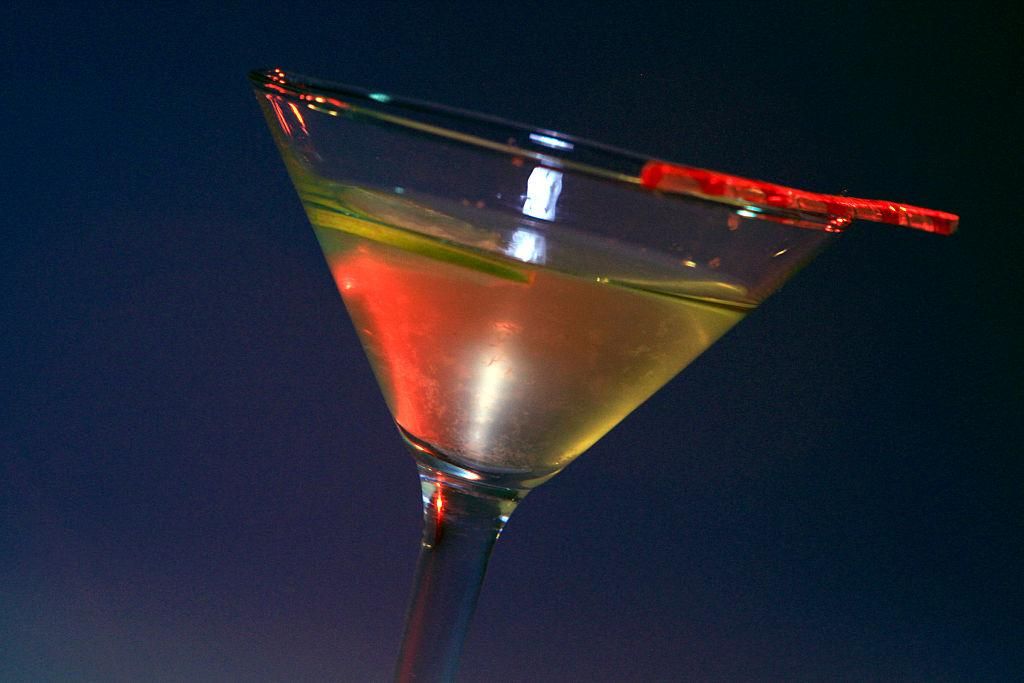
Back in 1996, when Ketel One was a relatively unknown vodka, a representative for the company walked into a newly opened bar in Los Angeles called Lola’s. The rep, Kirk Gaither, spoke with owner Loren Dunsworth, requesting a drink be made with their vodka.
“We had this bottle of apple schnapps that had been sitting around collecting dust,” Dunsworth says. “I told the bartender, let’s try something with the apple schnapps. When we got something that was pleasurable to the palate, I said, ‘Let’s take a slice of granny smith apple, soak it in a little lemon, and float it on top and see how it goes.’ And it went.”
That initial drink was named the Adam’s Apple Martini, after one of the bartenders there at the time, Adam Karsten. But the Lola’s team removed the “Adam’s” shortly thereafter, leaving it as the apple martini, or the Appletini. The simple name, along with the simple ingredients, play a role in the lasting appeal of the drink.
“A lot of the appeal of a lot of things at Lola’s was the simplicity of what we did there,” Dunsworth says about the bar, which closed in 2013. “There was nothing complicated about that drink. I nod to all the naysayers who came up with all these craft cocktails that said once craft cocktails came out, the apple martini was no good anymore. That was a done deal. And here we are.”
Recipe from Loren Dunsworth: In a cocktail shaker, add 2 ounces Ketel One vodka, 2 ounces DeKuyper Apple Pucker, and 8 ice cubes. Shake until frosty. Strain into a martini glass and float a green apple slice on top.
Hurricane; Created in the 1940s at Pat O’Brien’s in New Orleans
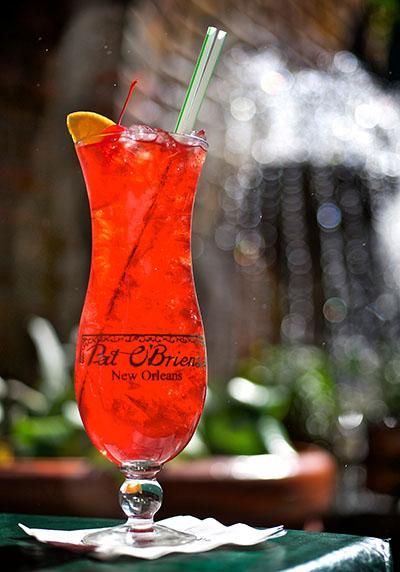
Shortly after the end of World War II, the United States was pretty much swimming in rum. Distilleries throughout the country had pivoted to create wartime necessities during the war, and when they returned to creating scotch, bourbon and whisky, supply was understandably scarce. But rum was steadily flowing up the Mississippi from the Caribbean, and when bars wanted to buy a domestic alcohol, they were encouraged to also buy a large amount of rum. Pat O’Brien’s general manager George Oechsner, Jr., pulled together the creative minds working in the bar at the time to figure out a way to use up the rum surplus. The exact creator is up for debate, but everyone agreed the tropical sweetness of passionfruit juice was the perfect complement to the sugar-tinged flavor of rum. Pouring it into a glass shaped like a hurricane lamp added the extra pizzazz that took the Hurricane to cocktail stardom.
Recipe from Jamie Touchton, marketing at Pat O’Brien’s: Combine 4 ounces of 80 Proof Amber (or Gold) Rum and 4 ounces of Hurricane Cocktail Mix, which is a passionfruit-based mix. Serve garnished with an orange slice and a cherry.
Singapore Sling; Created in 1915 at Raffles Singapore
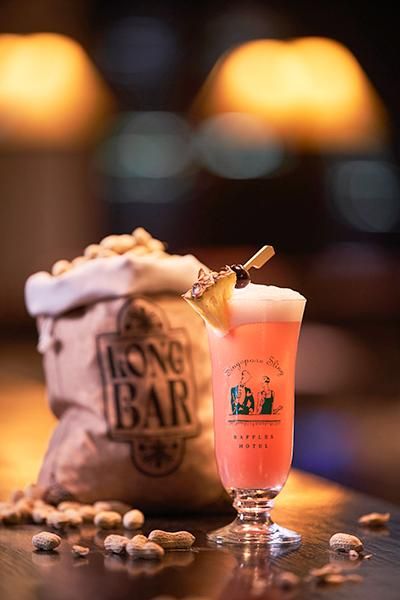
When Raffles Singapore bartender Ngiam Tong Boon invented the Singapore Sling in 1915, it was meant to address a disparity in local society at the time: women were not able to drink in public because of etiquette standards. Instead, they mostly drank tea and fruit juice as they gathered with the rest of the local community at Raffles’ Long Bar. Ngiam skirted convention by creating a gin-based cocktail deliberately colored pink with grenadine and cherry liqueur. It looked like plain fruit juice, which meant women could surreptitiously drink in public.
Recipe from Raffles Singapore: Combine 30 ml gin, 15 ml cherry brandy, 120 ml pineapple juice, 15 ml lime juice, 7.5 ml Cointreau, 7.5 ml Dom Benedictine, 10 ml Grenadine, and a dash of Angostura bitters. Serve garnished with a slice of pineapple and a cherry.
Planning Your Next Trip?
Explore great travel deals
Smithsonian magazine participates in affiliate link advertising programs. If you purchase an item through these links, we receive a commission.
/https://tf-cmsv2-smithsonianmag-media.s3.amazonaws.com/accounts/headshot/JenniferBillock.png)
/https://tf-cmsv2-smithsonianmag-media.s3.amazonaws.com/accounts/headshot/JenniferBillock.png)